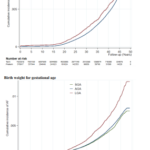2023-04-25 スイス連邦工科大学ローザンヌ校(EPFL)
Vrije Universiteit BrusselのRonnie Willaert教授は「私たちの技術は、現在存在するすべての技術よりも速く、簡単で、はるかに安価です。」と述べています。
研究者らは、光学顕微鏡に基づく、簡単で迅速かつ安価なASTのための新しい方法を開発しました。この方法は、細菌の振動を監視することにより、薬剤感受性を検出します。この新技術は、広範な細菌に適用可能であり、医療や研究の分野で大きな意義を持つとされています。
<関連資料>
- https://actu.epfl.ch/news/testing-antibiotic-resistance-with-a-fast-cheap-an/
- https://www.pnas.org/doi/10.1073/pnas.2221284120
単一細菌の生存率と抗生物質応答性試験のためのシンプルな光学的ナノモーション法 Simple optical nanomotion method for single-bacterium viability and antibiotic response testing
Maria I. Villalba, Allan Bonvallat, Charlotte Yvanoff, Vjera Radonicic Ronnie G. Willaert and Sandor Kasas
Proceedings of the National Academy of Sciences Published:April 24, 2023
DOI:https://doi.org/10.1073/pnas.2221284120

Abstract
Antibiotic resistance is nowadays a major public health issue. Rapid antimicrobial susceptibility tests (AST) are one of the options to fight this deadly threat. Performing AST with single-cell sensitivity that is rapid, cheap, and widely accessible, is challenging. Recent studies demonstrated that monitoring bacterial nanomotion by using atomic force microscopy (AFM) upon exposure to antibiotics constitutes a rapid and highly efficient AST. Here, we present a nanomotion detection method based on optical microscopy for testing bacterial viability. This novel technique only requires a very basic microfluidic analysis chamber, and an optical microscope equipped with a camera or a mobile phone. No attachment of the microorganisms is needed, nor are specific bacterial stains or markers. This single-cell technique was successfully tested to obtain AST for motile, nonmotile, gram-positive, and gram-negative bacteria. The simplicity and efficiency of the method make it a game-changer in the field of rapid AST.


